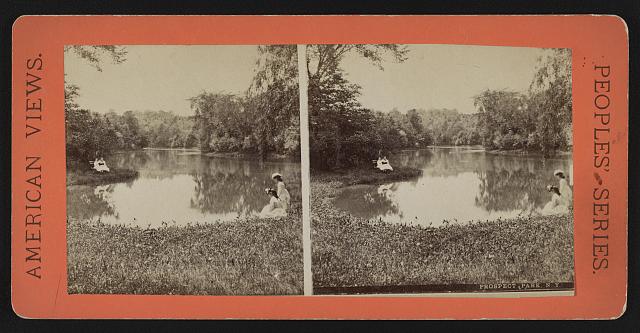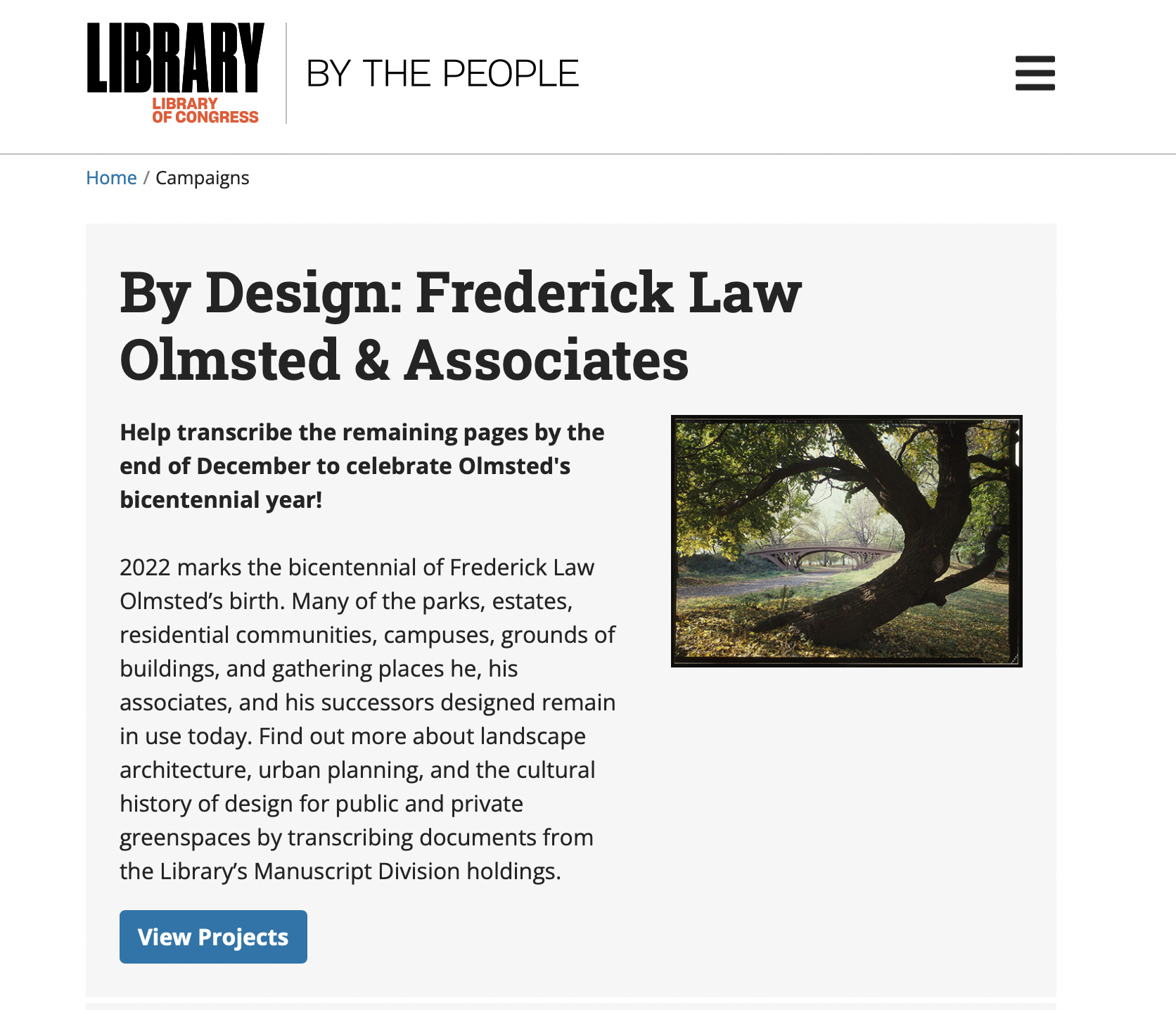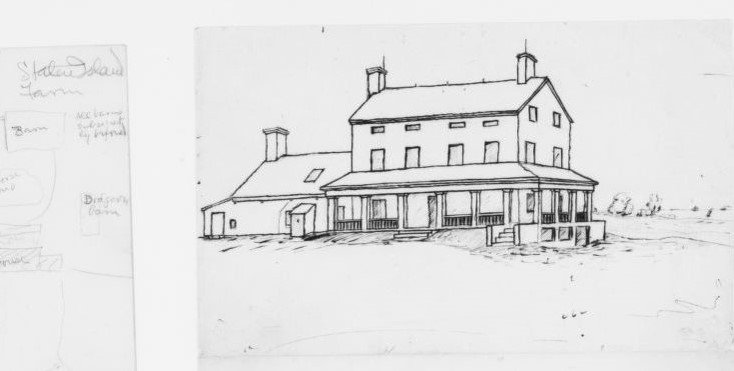In early December 2021, the Library of Congress launched a new “By Design: Olmsted and Associates” By the People crowdsourcing transcription campaign. It provides volunteers the opportunity to transcribe, review, and study Olmsted documents in an up-close way, by translating handwritten, typed, and printed original historical documents into keyed transcriptions.
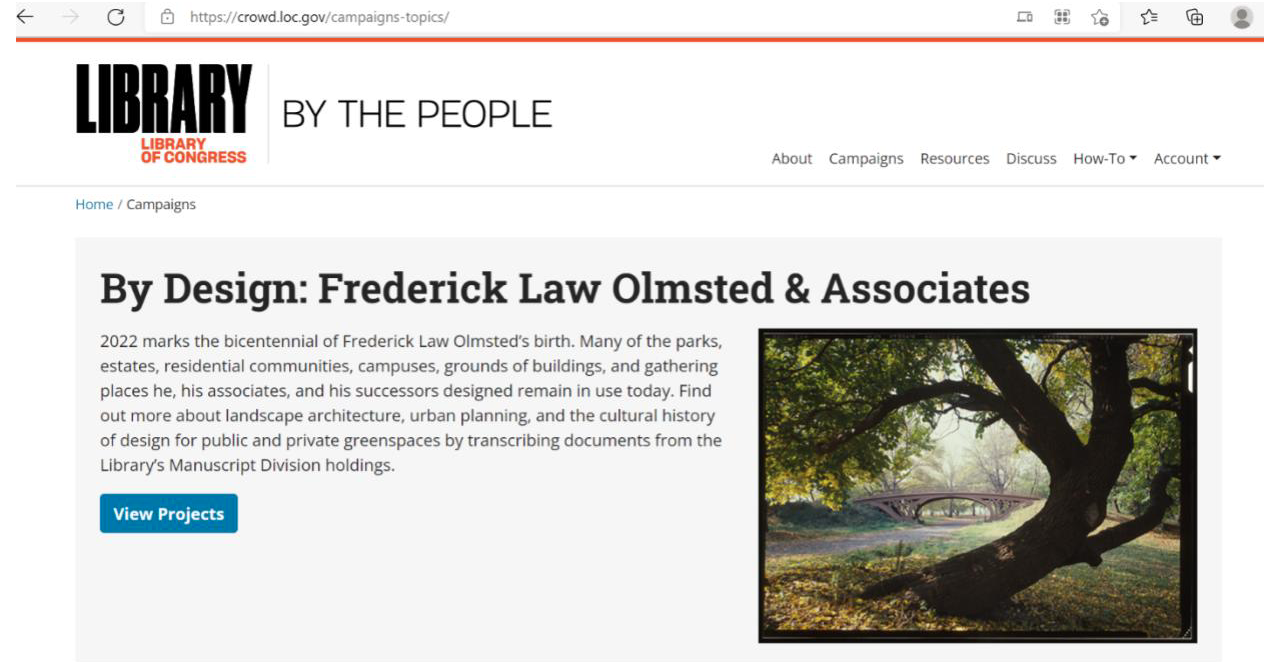
The By the People crowdsourcing transcription program is just three years old at the Library of Congress, but as of the beginning of December 2021 has released 667,000 pages for transcription across 26 different campaigns, of which Olmsted is the newest. By the People Campaigns (loc.gov) The name By the People comes from Abraham Lincoln’s Gettysburg Address, and like Olmsted parks and the goal of parks for all the people, it reflects the spirit of democracy in which the nation’s largest public library is asking you to join in making the collections held in public trust more accessible to everyone.
Participating in crowdsourcing transcriptions is a way for grassroots volunteers to closely engage with online archival materials related to Olmsted projects in their cities and home towns, or across the nation and into Canada, for the Olmsted Bicentennial year, and to learn more about Frederick Law Olmsted, his associates, and career.
What’s in the “By Design” crowdsourcing transcription campaign?
The Library of Congress Manuscript Division has two major Olmsted-related manuscript collections digitized and available online: the personal papers of Frederick Law Olmsted, About this Collection | Frederick Law Olmsted Papers | Digital Collections | Library of Congress (loc.gov) and the records of the legacy landscape architecture firm, the Olmsted Associates Records About this Collection | Olmsted Associates Records | Digital Collections | Library of Congress (loc.gov). The By the People “By Design: Olmsted and Associates” campaign will over time draw its primary materials from both these digitized collections.
The primary documentation demonstrates not just the thoughts and work of Olmsted and his two sons who followed him into the landscape architecture profession, but the many kinds of tradesmen, horticulturalists, nurserymen, architects, civil engineers, city planners, civic organizations, private clients, business people, assistants, partners, and colleagues they interacted with and with whom they collaborated to pursue their projects. Content like letters reveal relationships within the Olmsted family, and the projects overall chart the emergence of the professional fields of landscape design and urban planning.
The Frederick Law Olmsted Papers Subject File
The first project of the campaign is the Frederick Law Olmsted Papers Subject File, By the People Subject File, 1857-1952 (By Design: Frederick Law Olmsted & Associates) (loc.gov) It contains 13,000 document images and is arranged alphabetically by type of project and location, from cemeteries to city and regional planning, community design, hospitals, hotels and clubs, military buildings, parks, public buildings, school buildings and grounds, and fairs and expositions in Chicago, Paris, and New York.
Abigail Shelton, the By the People community manager for the Olmsted campaign, prepared a geographical location guide that transcribers might like to use as an entry point to get started with materials in the Frederick Law Olmsted Papers Subject File. They can pick a place close to their own heart or maybe somewhere new to them. Olmsted_BythePeople_GeographicCampaignGuide.pdf (loc.gov) Or, volunteers can browse the titles of the folders of digitized documents available within a project, and pick and choose which ones they’d like to work on.
Delving into one of the folders, on Cemeteries, for example, might reveal Olmsted’s philosophy of creating sacred spaces for fallen veterans, or choosing trees and shrubs that will prevail over time and make a local burial ground into a lasting park-like retreat for a community. Folders on Parks might show Olmsted thinking about safely accommodating nervous horses on bridle paths near strolling pedestrians, or the way park pathways intersect with roads, or swampland and marsh might be transformed into scenic ponds and waterways. Others show local boosters of towns contacting Olmsted with hope of help with their town square, a city beach, or recreational area; planning for green space and playgrounds in the expansion of residential sections of cities; or creating attractive grounds for public buildings or private resorts. Throughout is evidence of the creative process and business sides of landscape design.
How do I get started as a By the People volunteer?
It’s easy to find out more about volunteering to be a transcriber or reviewer on the By the People web portal at https://crowd.loc.gov . Anyone can volunteer, but the project is particularly designed for students, teachers, and life-long learners, and Olmsted or landscape architecture enthusiasts of all types, including those planning Olmsted bicentennial events in their own city or looking for an Olmsted online project they can do together as a school or community group.
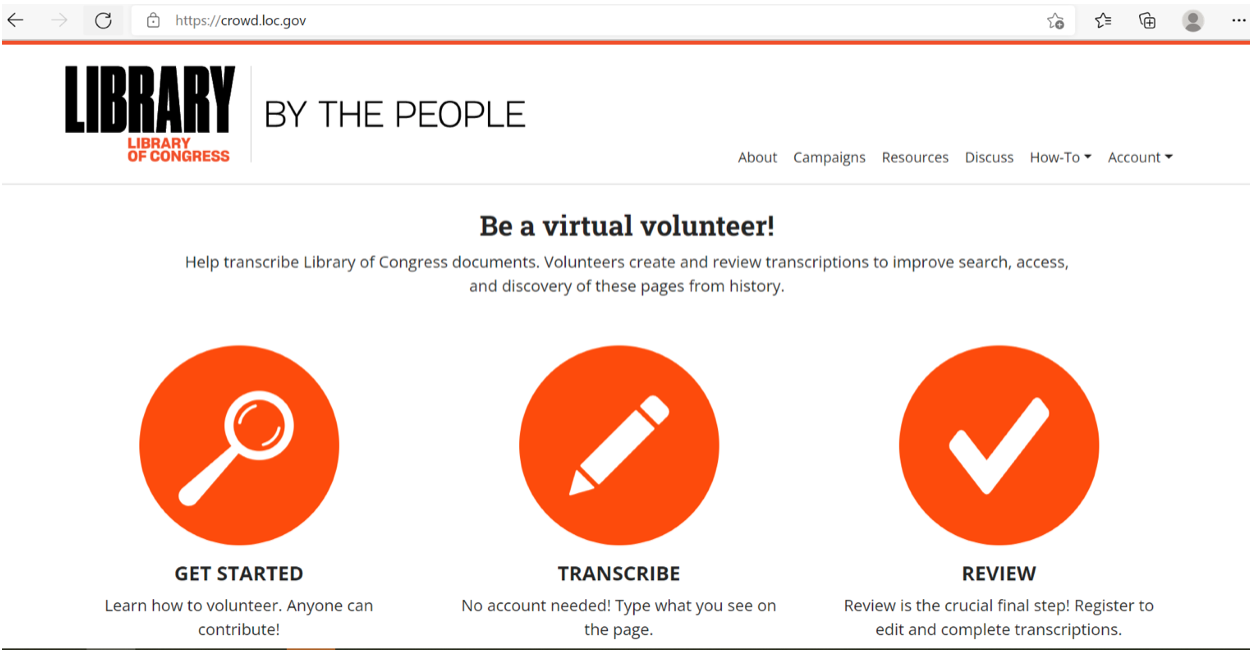
You can find out all about how to participate from the online Welcome Guide. By the People Welcome Guide (loc.gov)
Related pages includes details on how to transcribe By the People How to transcribe (loc.gov) and also how to review transcriptions. By the People How to Review (loc.gov)
Creating completed transcriptions is a two-step process. One or more people can work on transcribing and editing documents in a given folder over time. Once a transcript appears to be finished, it is marked for review. Another pair of eyes does the review, and when accepted, marks the transcription as completed. Anyone can transcribe, but you need to create an account, or register, to review or tag documents.
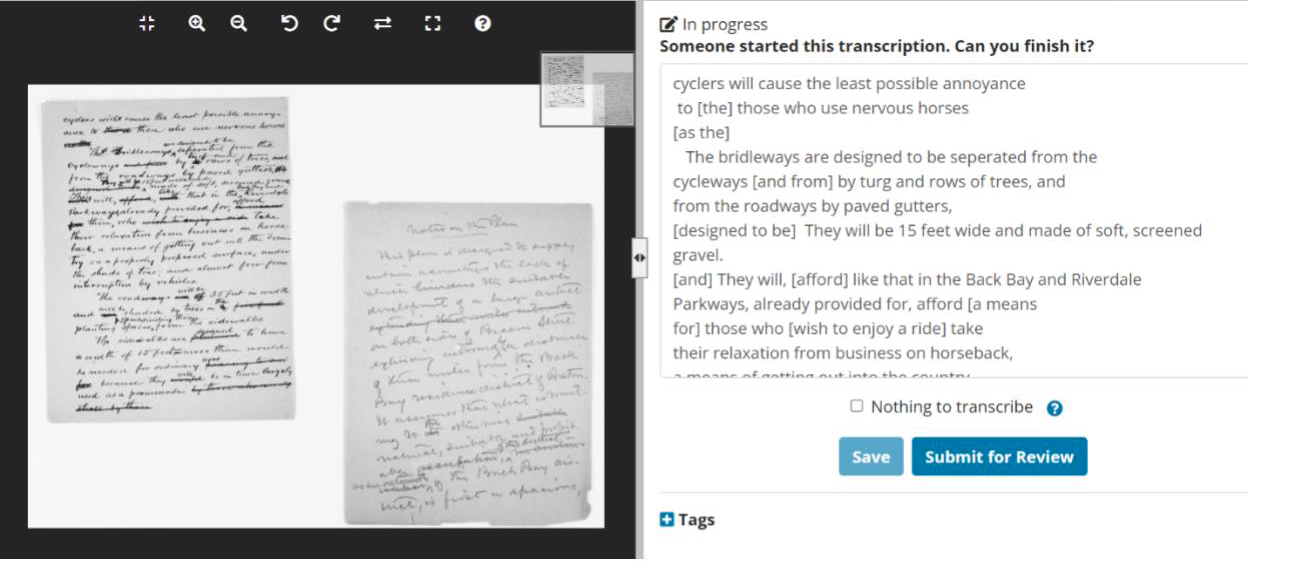
What will happen after the transcriptions are completed?
The foremost goal of “By Design: Olmsted and Associates” is to create the opportunity for close engagement with the primary materials. In the long-term, the Library of Congress will incorporate the raw-text crowdsourced transcriptions By the People volunteers create of the “By Design” projects into the Library’s Olmsted digital humanities presentations sites, which are available to everyone everywhere with an Internet connection, through loc.gov. This will make the online collections keyword searchable and also provide easy-to-read and downloadable transcripts for single documents or everything in a given collection folder–making primary Olmsted documentation more accessible and easy to use for all the people.
Barbara Bair is curator of Literature, Culture, and the Arts in the Manuscript Division of the Library of Congress.









